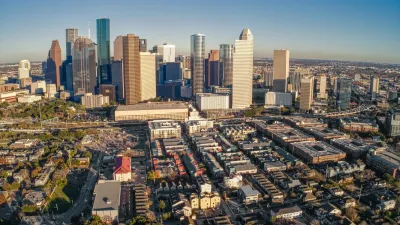Several recent reports lend credence to the “rent is too damn high” narrative. But exorbitant rents aren’t just a story in New York City or San Francisco—median rent is higher than 30 percent of median income in 90 cities in the United States.

“An analysis for The New York Times by Zillow, the real estate website, found 90 cities where the median rent — not including utilities — was more than 30 percent of the median gross income,” reports Shaila Dewan.
“Nationally, half of all renters are now spending more than 30 percent of their income on housing, according to a comprehensive Harvard study…” That figure rose from 38 percent just in 2000. The problem is such that Housing Secretary Shaun Donovan recently declared the current moment to be “the worst rental affordability crisis that this country has ever known.”
Most of the personal stories reported by Dewan are set in Miami, which is the second-least-affordable rental market in the country, where median rent is 43.2 percent of median income.
“Part of the reason for the squeeze on renters is simple demand — between 2007 and 2013 the United States added, on net, about 6.2 million tenants, compared with 208,000 homeowners,” and the growing demand created by the country’s shifting demographics is not expected to decline before the rental stock, and its costs, catch up.
FULL STORY: In Many Cities, Rent Is Rising Out of Reach of Middle Class

Alabama: Trump Terminates Settlements for Black Communities Harmed By Raw Sewage
Trump deemed the landmark civil rights agreement “illegal DEI and environmental justice policy.”

Planetizen Federal Action Tracker
A weekly monitor of how Trump’s orders and actions are impacting planners and planning in America.

Why Should We Subsidize Public Transportation?
Many public transit agencies face financial stress due to rising costs, declining fare revenue, and declining subsidies. Transit advocates must provide a strong business case for increasing public transit funding.

Understanding Road Diets
An explainer from Momentum highlights the advantages of reducing vehicle lanes in favor of more bike, transit, and pedestrian infrastructure.

New California Law Regulates Warehouse Pollution
A new law tightens building and emissions regulations for large distribution warehouses to mitigate air pollution and traffic in surrounding communities.

Phoenix Announces Opening Date for Light Rail Extension
The South Central extension will connect South Phoenix to downtown and other major hubs starting on June 7.
Urban Design for Planners 1: Software Tools
This six-course series explores essential urban design concepts using open source software and equips planners with the tools they need to participate fully in the urban design process.
Planning for Universal Design
Learn the tools for implementing Universal Design in planning regulations.
Caltrans
Smith Gee Studio
Institute for Housing and Urban Development Studies (IHS)
City of Grandview
Harvard GSD Executive Education
Toledo-Lucas County Plan Commissions
Salt Lake City
NYU Wagner Graduate School of Public Service





























